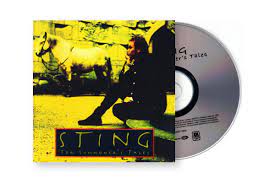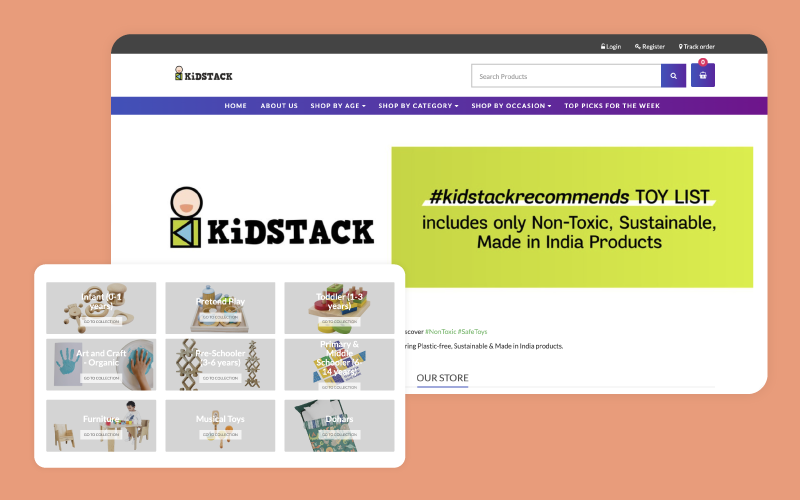“The internet is becoming the town square for the global village of tomorrow.” – Bill Gates.
One of the world’s biggest gifts to mankind – the internet. Earlier accessible to only a few, today it is rapidly reaching remote corners of the world. Entire businesses are built and sustained through the internet. eCommerce is here to stay. But what is eCommerce? Let’s do a deep dive.
What is eCommerce?
eCommerce is the buying and selling of products (or services) through the internet. It consists of a large variety of tools, systems, and data for online sellers and buyers.
Let’s take a closer look at the history, growth and impact of eCommerce in the business world. We’ll also go through the benefits of eCommerce and how it has become more popular.
The birth of eCommerce: how it all started
Wondering what was the first product ever to be sold online?
The first online transaction happened on 1994 — two friends in New York made history by making a sale of a Sting CD online, thus becoming the first eCommerce shoppers.

The growth of eCommerce happened after the development of SSL — an encryption that ensured safety on the internet. This would enable safe transactions over the internet.
In 1995, Amazon made its debut in the eCommerce world as an online bookstore, later transitioning into the world’s largest online retailer. Later, eBay and Etsy entered the market as eCommerce platforms.
Related Read: Reasons to sell online in India
The early years of eCommerce were the era of e-marketplaces. In India, Flipkart was founded in 2007, bringing Indians the joy of shopping online.
Today, eCommerce has evolved beyond the limitations of marketplaces. Independent brands started selling online with their own websites. Now, online consumers are witnessing the rapid emergence of social commerce, mobile eCommerce, and direct-to-consumer brands.
What is the state of eCommerce today? We wrote a whitepaper report based on a survey of eCommerce consumers in India. It revolves around the Trust factor of eCommerce. How can online brands build trust among their target audience? Read the Whitepaper to find out.
Business models: Types of eCommerce businesses
A business model describes the transaction between consumers and sellers. Basically, there are different types of eCommerce based on who sells to whom. There are four main types of eCommerce business models:
1. Business-to-consumer (B2C):
When a retailer sells products or services to individual consumers, such a business model is called B2C. For example, when you buy a dress from an online seller.
2. Business-to-consumer (B2B):
Business-to-Business (B2B) refers to commerce between two businesses. For example, when a clothing brand buys raw materials from a manufacturer, that’s an example of B2B sale.
3. Consumer-to-consumer (C2C):
C2C business model is when a sale happens between two consumers. For example, when you sell a used car over the internet, it’s an example of C2C transaction.
4. Consumer-to-business (C2B):
Consumers can sell their services to brands; this business model is called C2B. Creative professionals such as influencers, photographers, and writers, come under this category.
5. Direct-to-consumer (D2C):
D2C means that a brand is selling directly to its end customer without going through a retailer, distributor, or wholesaler.
Top examples of eCommerce with success stories
Whether you’re a physical store owner who wants to take a business online or you want to start a small online business from home, eCommerce can be profitable for you. Let’s look at the different options you have when it comes to selling products online or services online.
Wholesale
Purchasing products in bulk from a wholesale supplier and then selling them on your own store is one option for eCommerce. You can get access to a wide variety of products and start your business quickly. This is the best option if you wish to sell many types of products in your store.
Buying wholesale is comparatively lower risk because you are buying products that are already validated in the market.
A wholesale success story
With the aim of popularising toxic-free and eco-friendly toys in the market, Simran Lekhi founded Kidstack. Being a mother of two, Simran was concerned about the low-quality plastic toys in the market and wanted to do something about it. The brand has a unique collection of toys on their online store that is sustainable and non-toxic.

Kidstack leverages Wholesale and social commerce to drive sales. The majority of their wholesale partners include renowned toy brands as well as local craftsmen. Check out the full business story here.
Makers
Selling handmade products online has become increasingly popular pushing up its demand. Whether it’s jewellery, clothes, or art, making your own products ensures uniqueness and quality above wholesale.
If you have the required raw materials and the skill to make products, this business model is for you. And, converting your hobby into a profit-making business is going to be an empowering approach!
A maker success story
For Vakula, founder of Pulpbrew, what started as a personal effort for nutritious smoothies soon paved the way for a thriving small business that sells smoothies entirely made of organic raw materials and preservative-free.

The brand’s products are focused on the needs of mothers. Vakula says, mothers have to juggle a thousand different things and their own health takes a backseat. This is why PulpBrew smoothies cater to the needs of busy mothers. Read their full brand story here.
Dropshipping
Dropshipping is the least expensive option when it comes to eCommerce. In this model, you don’t have to keep a stock of products. Your job is to market products, collect orders, and send them to the supplier, who will ship the products to the customers.
Manufacturing
A private label product is created by a manufacturer and sold under the brand name. The business controls everything from what goes in the product, how it’s packaged, and what the labels look like. Manufacturing is a great option for businesses that want to create unique products.
This business model requires a good amount of financial investment upfront. So, make sure you validate your product before starting.
Subscription
Subscription-based eCommerce is one of the fastest-growing business models. A subscription eCommerce business charges customers a recurring fee—usually monthly or yearly—to access a product or service. Some common industries that adapted this business model are streaming services, monthly subscription boxes, food services, and membership communities.
To know more, read this complete guide on how to start a subscription business.
Digital developments
Any non-physical product that can be sold and distributed online without restocking inventory is a digital product. This can include course modules, PDFs, NFTs, plugins, templates, and other digital files. There can be significant upfront costs for making digital products, costs for selling them are incredibly low.
Resources:
- How to sell digital products online the right way
- Selling ebooks online and building a profitable business
The benefits of eCommerce
Major growth potential:
The Indian eCommerce industry has been on an upward growth trajectory and is expected to become the second largest eCommerce market in the world by 2034. This means that each passing year, your pool of customer base expands as more people become online shoppers.
Besides, you don’t have to deal with costs that are usually common in brick-and-mortar store business. This gives you unlimited potential which comes with freedom of place as well!
Start with little to no money:
A lot of people tend to abandon their business idea thinking about the investment required to get it off the ground. However, to start an eCommerce business, all you need is a computer, domain name, and a website builder or eCommerce platform.
Direct-to-consumer access:
Brands have the power to build direct relationships with their target audience, unlike traditional business models. This comes with increased customer retention and brand loyalty. What’s more, you don’t need to spend thousands on advertising to connect with your potential customers. All you need is a social media strategy and a strong brand image.
Check out the reasons why you should start your own eCommerce website.
Why is eCommerce so popular?
eCommerce has transformed how the world buys and sells. There has been a huge shift to online shopping post-pandemic, and this trend is here to stay.
Here are the reason why eCommerce has become so popular.
1. Personalization:
According to a McKinsey report, customers are more satisfied when they receive a shopping experience that is based on their preferences. eCommerce brands offer a personalized shopping experience to consumers like nowhere else. This keeps them coming back for more, increasing brand loyalty. Online shoppers love being understood and getting their preferences heard.
Related Read: How Indians Shop Online in 2022: Shopping Trends
2. Purpose:
Marketing experts have attested that consumers make decisions based on emotions rather than logic. eCommerce has opened doors for brands to stand out with their purpose or brand vision. This can range from sustainability and vegan to charity and supporting local brands.
3. Search experience:
Consumers can save time and effort by searching for products online. The eCommerce world has made it easier to access products from any corner of the world.
4. Product variety:
Numerous statistics have shown that shoppers like to compare products before making a final decision. And eCommerce has made product comparison easier than ever. Consumers can now shop from a vast array of products and find what they want quickly.
5. Social commerce:
Social commerce in India is expected to reach a market value of US$ 20 billion by 2025, with a potentially monumental jump to US$ 70 billion by 2030, according to a bain.com report. As mobile usage increases, social media is becoming a hub for selling products and services. More consumers find it comfortable to buy through social commerce.
Related Read: Top advantages and disadvantages of eCommerce
Starting an eCommerce business
Growing a business profitable online is realistic and accessible to anyone who has access to the internet.
Where do you start an eCommerce business?
You have a number of options at hand if you want to sell products online and start a business:
- Online marketplaces
- Social commerce
- Your own online store
Online marketplace:
E-marketplaces include platforms like Amazon, Flipkart, and Etsy. Usually, such platforms have thousands of daily users. So, your business can access this user base and harness it as a source of sales. But, you will be competing with many other brands for the same target audience. Thus, marketplaces have its own limitations of scaling.
Social commerce:
Selling products or services using networking sites such as Facebook, Instagram, and Snapchat is social commerce. This form of commerce gives you more opportunities to engage with your target audience.
Take the first step to your own online store
Take the first step and start your own eCommerce business online. Building a brand online has become easier now, more than ever. You just need to choose the right resources to lift your business off the ground.
By signing up on Instamojo, you can unlock a wide range of eCommerce features that will help you in the journey of becoming a successful entrepreneur.

